

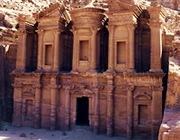
Having made a very brief visit to Petra several years before, in unbelievably cold conditions, we were so impressed that we knew we had to return. In 2000 we came back to spend 3 days exploring this incredible place and making a trip to the desert of Wadi Rumm.
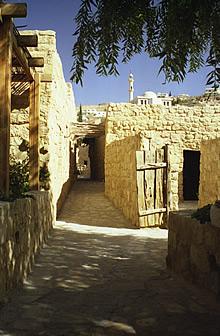
The earliest settlement at Petra is probably around 7000BC. In the Iron Age, 1200 - 300 BC, the area was known as Edom and there were certainly Bronze Age people here called Horites (Deut. 2:12,22) hunters who lived in caves. The Book of Job describes splendid tombs, great wealth, gold, silver and ancient treasures. The Petrans were known as keen gardeners, cutting irrigation channels through the rock.
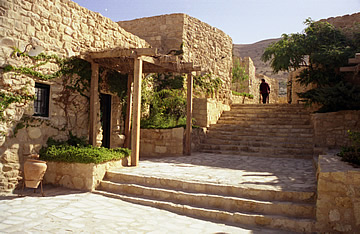
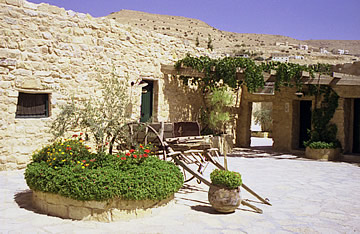
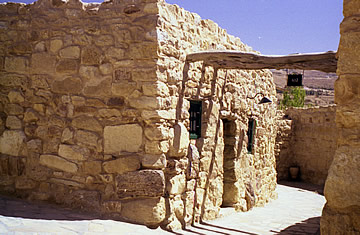
At the death of Alexander Petra was sandwiched between the territory of two of the three generals who carved up the empire - these were Seleucus who founded the Seleucid dynasty in Syria, and Ptolemy, founding the Ptolomeic dynasty in Egypt. After around 100 BC both these dynastic empires declined and Petra began to flourish, gradually extending its dominion into the Negev, east to the Euphrates and south along the Red Sea.
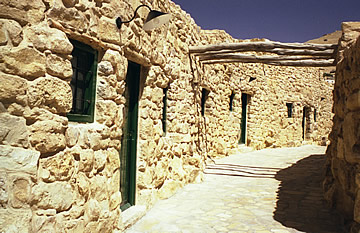
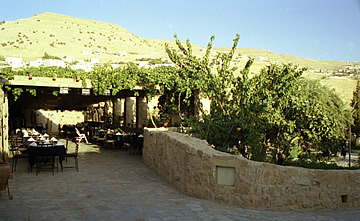
The Petrans became wealthy providing safe passage for the caravans plying the various trade routes which passed through their domain.
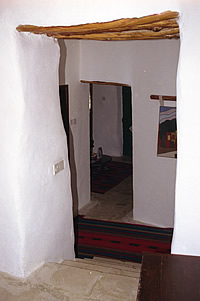
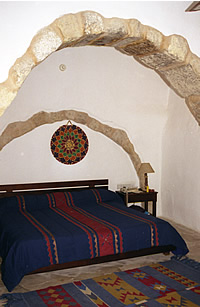
We flew into Amman very late at night and were met by a driver to take us to our hotel near Petra. This was a rather scary drive - we discovered that this was the driver's fifth such journey of the day and he looked in danger of falling asleep, when he wasn't eating, drinking or trying to get his mobile to work. We talked to him as best we could to try and avoid disaster!
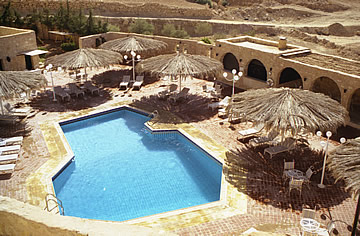
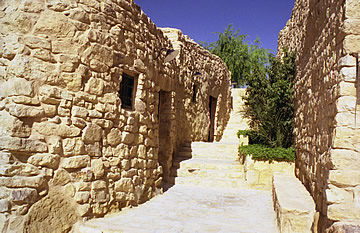
Our hotel was wonderful: Taybet Zaman - one of my all time favourites. It is a village which has been completely converted to a hotel. Guests stay in the village houses and ours was superb - a living room with deep sofas, marble bathroom and huge bedroom. Beautiful, comfortable and air-conditioned. A wonderful place to stay. We did most of our exploring in the mornings and spent the afternoon by the pool - introducing the locals to an eastern version of a chip butty - fries in pitta bread!
We took the shuttle bus to Petra and bought a three day ticket at the new Tourist Office at the entrance. We got there as early as possible each day and left around mid-day or earlier, if we could, as the walk out can get tremendously hot.

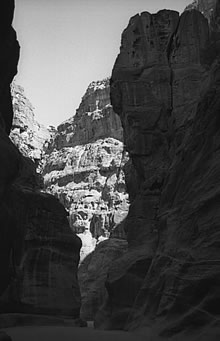

The tombs and temples carved in to the rock, for which Petra is justly famous, are the work of the Nabateans over 2000 years ago. It was unknown to the western world until 1812 when Johann Ludwig Burckhardt, a Swiss explorer, rediscovered it, and John William Burgon immortalised it as a "rose-red city half as old as time itself".
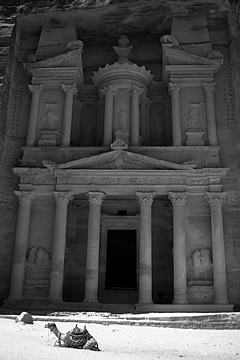
The main entrance to the site is through the siq - a defile of fantastic high cliffs, narrow in places, over 1km in length, itself with many remains including the lovely obelisk tomb which leads to the most atmospheric view o al-Khazneh (the so-called "Treasury" for the legend that the urn contains the pharaoh's treasure).
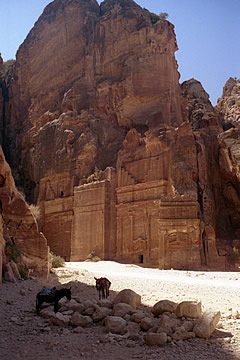
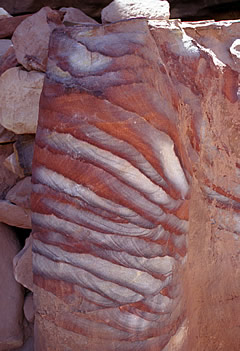
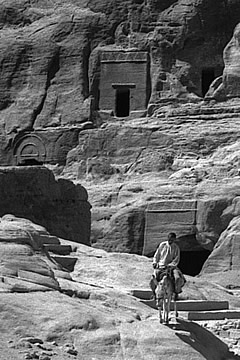
Exiting the siq and turning north the main route through Petra extends for about 1km and takes a good few hours to explore thoroughly.
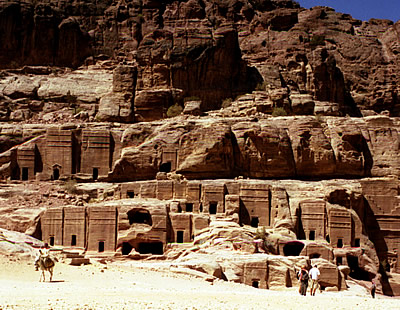
The street of facades, on the left after the Treasury, are four levels or "streets" of over forty tombs carved out of the cliff face followed by the Greek-style theatre which could seat upto 8500 people.
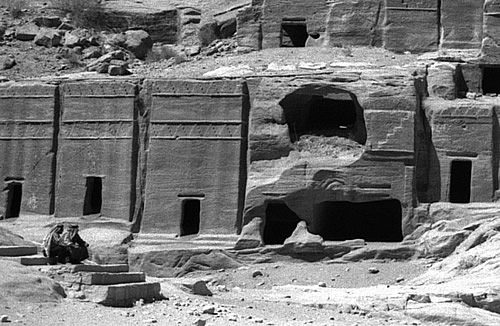
The colours in the rocks are very beautiful and are due to the presence of iron oxide, carried by water. Shades range from deepest red to yellow with deep pink and white striations.
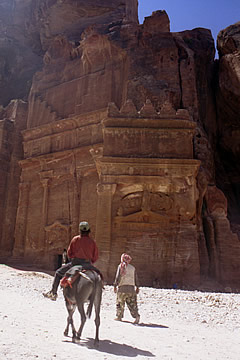
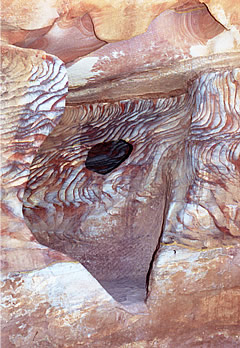
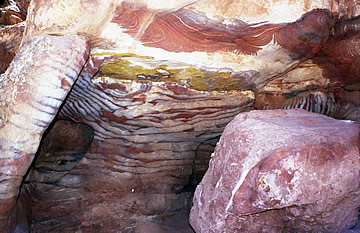
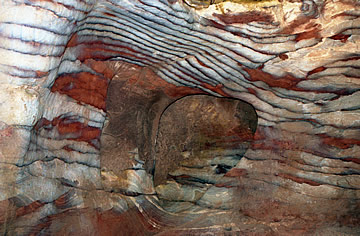
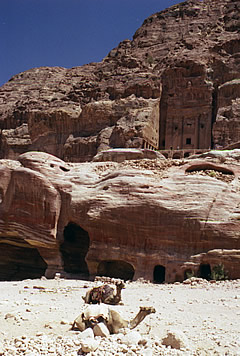
Further along on the right and raised above the street are the so-called Royal Tombs: Urn, Silk, Corinthian, Palace and Tomb of Sextus Florentius. It is uncertain whether these were actually tombs or temples - or even homes!

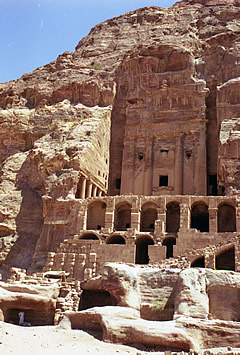
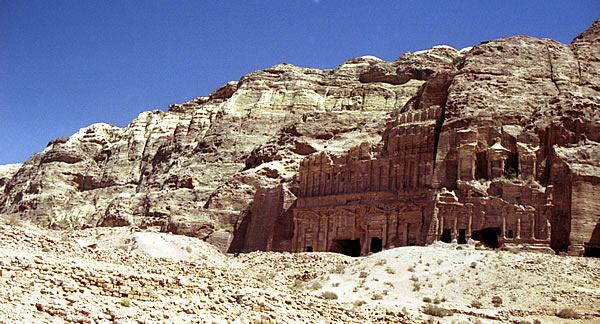
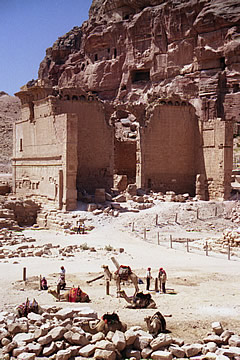
Opposite the Royal Tombs the street takes a sharp turn into the City Ruins on the Cardo Maximus. This colonnaded street was built by the Romans after their conquest in 106AD.
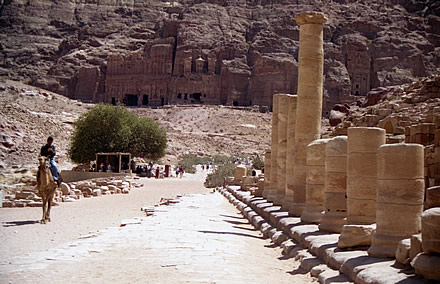
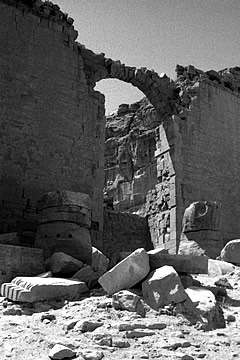
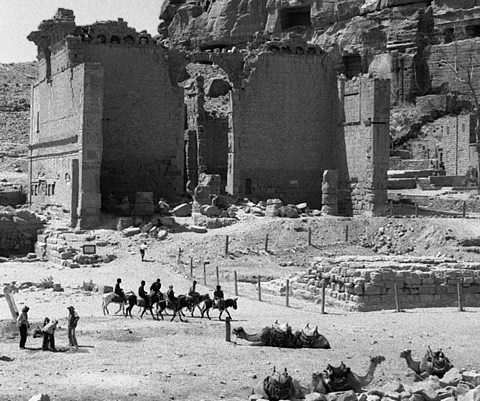
This area to us was the least interesting - there are far better Roman remains elsewhere.
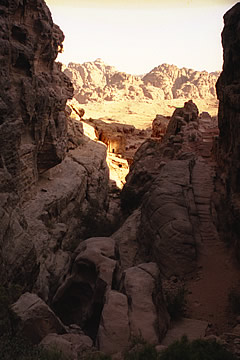
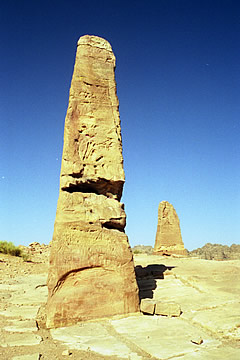
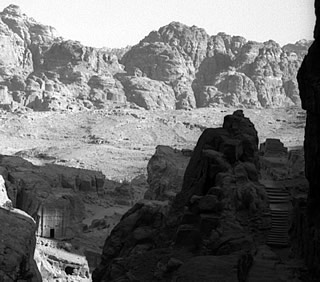
My absolutely favourite spot in Petra. Not too difficult a climb if you're reasonably fit.
The Nabateans used this route to reach the High Place; where the going was difficult they carved steps from the rock.
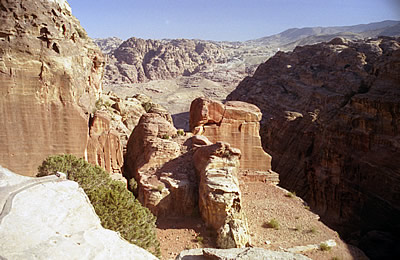
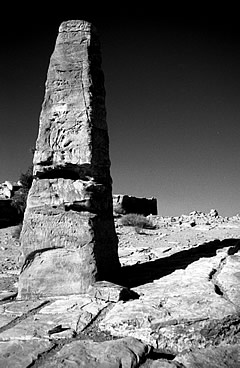
Jabal al-Najr occupies a double summit. The lower summit has been levelled by the Nabateans to leave two 7m pillars of stone. These are the sacred pillars representing the male and female Nabatean deities Dushara the god of strength and Al-Uzza the goddess of water and fertility.1 A huge amount of rock has been shifted to leave these imposing obelisks standing on a wide flat terrace.
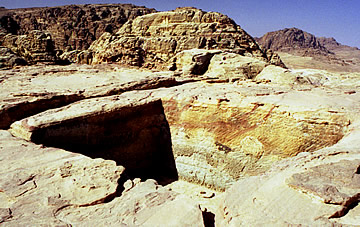
The actual summit, the place of sacrifice, is quite a small area and it doesn't have an obvious route onto it - a bit of a scramble but well worth it. It's very atmospheric - the only ritual sacrificial place of this type we've seen to date.
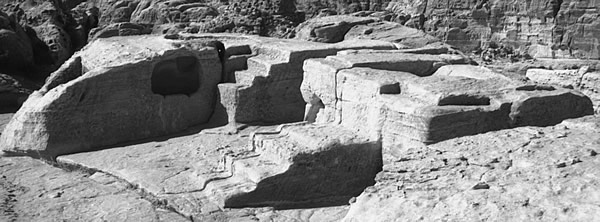
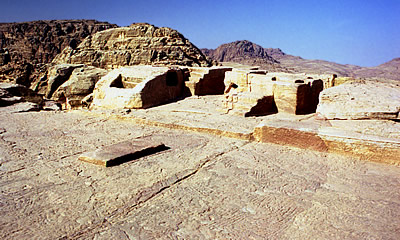
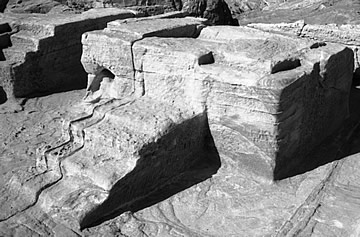
The altar, where sacrifices were made, remains intact, as well as a shallow stone in front of it for bloodless offerings such as edible produce and precious objects. All of the features were carved from the top down out of the original rock and are therefore not free-standing.
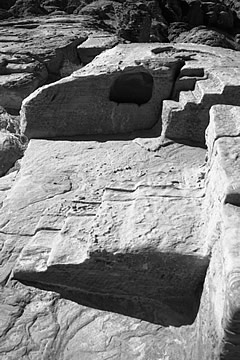
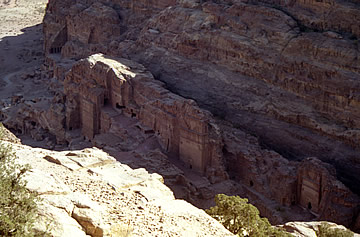
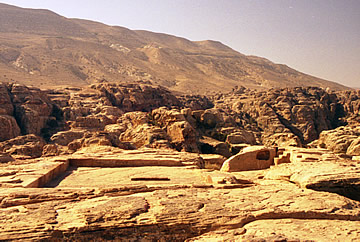

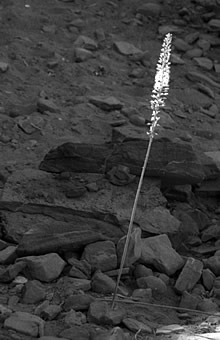
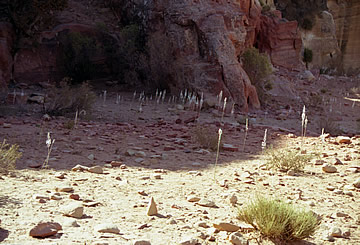
From the top and on the walk down via Wadi Farasa there are wonderful views both down into Petra and out into the wider landscape.
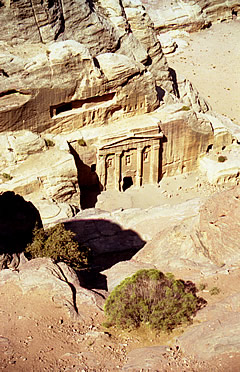
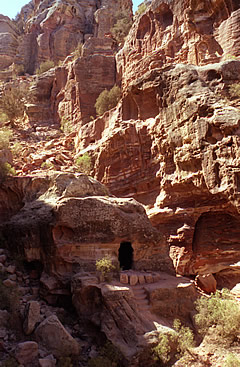
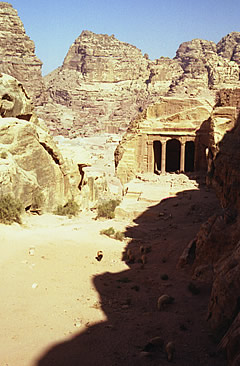
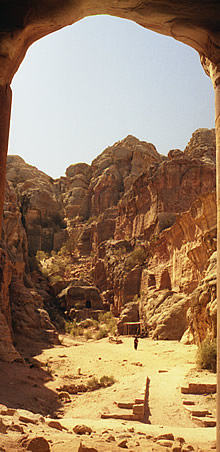
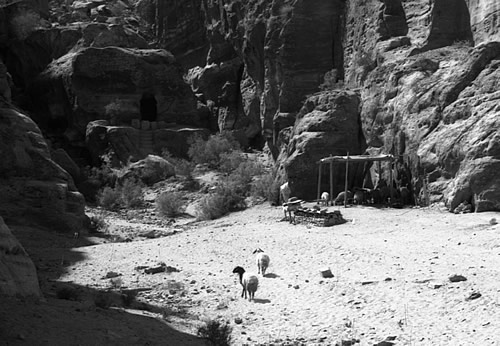
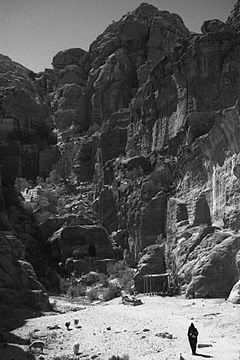
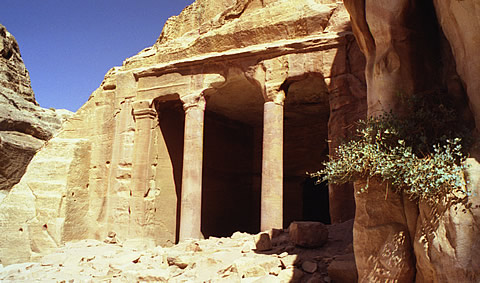
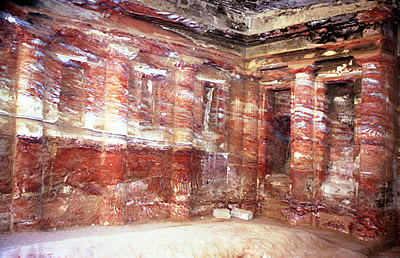
The Triclinium opposite the Roman Soldier's tomb has the only carved interior in Petra and is very intensely coloured.
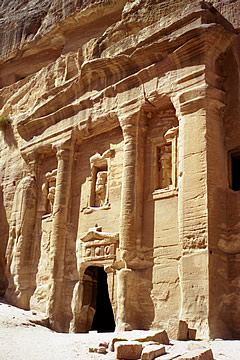
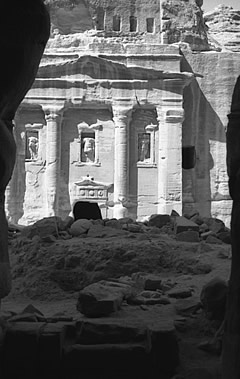
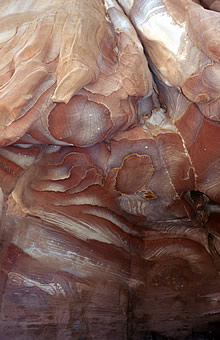
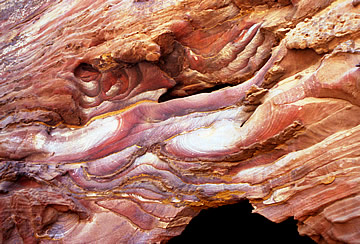
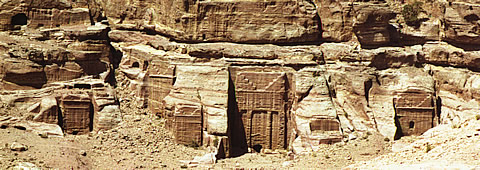
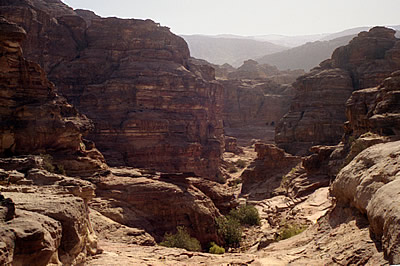
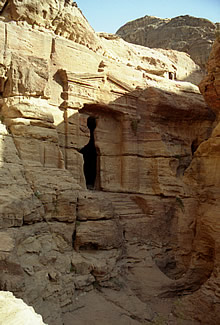
A more strenuous climb is to the Monastery. It is quite steep in places and involves climbing hundreds of steps. Some people went up on donkeys and I did feel sorry for the poor animals as some of the tourists were quite hefty.
The climb itself provides wonderful views and has other sites along the way, such as the Lion Triclinium.
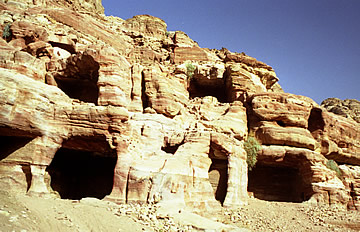
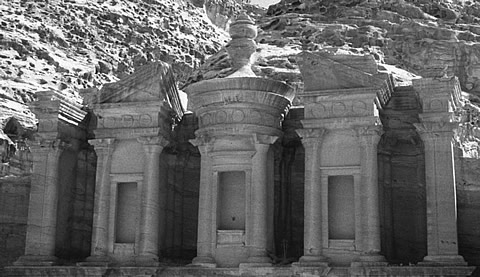
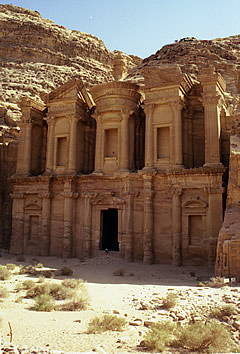
The view that greets you when you finally exit the narrow rock corridor into the courtyard in front of Ed Deir is astonishing. Measuring 45m by 50m this is the largest facade in Petra and the building is thought to have been a temple. the area in front has been levelled and could accommodate a large crowd of people.
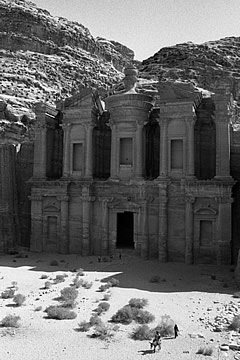
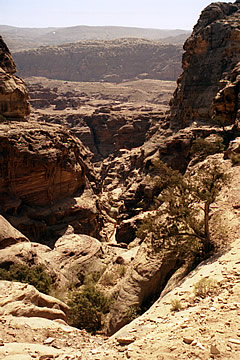
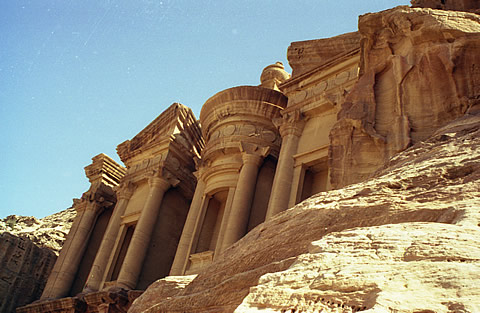
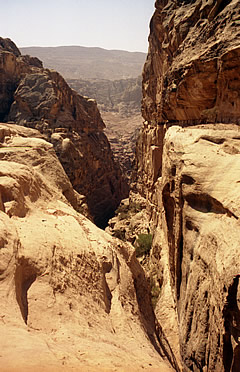
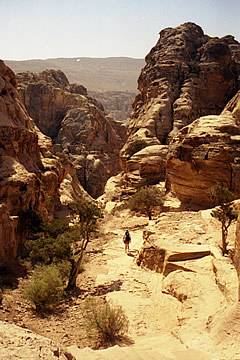
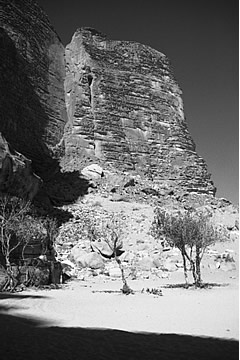
Forever associated with T.E. Lawrence and his campaigns in the First World War, a visit to Wadi Rumm was, for us, essential. Lawrence was travelling through this area to make attacks on the railway line south of Maan to draw Turkish troops into its defence and thus leave fewer for attacks elsewhere.
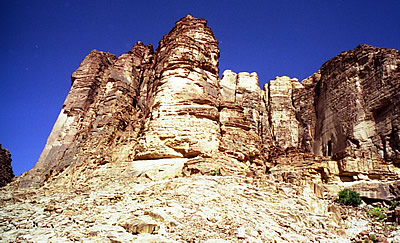

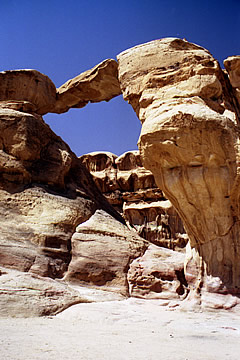
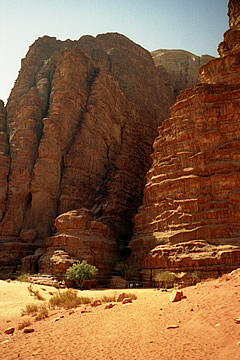
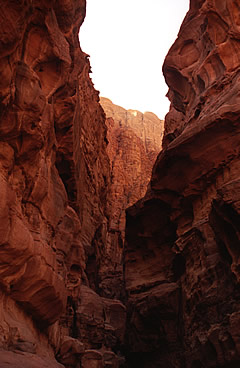
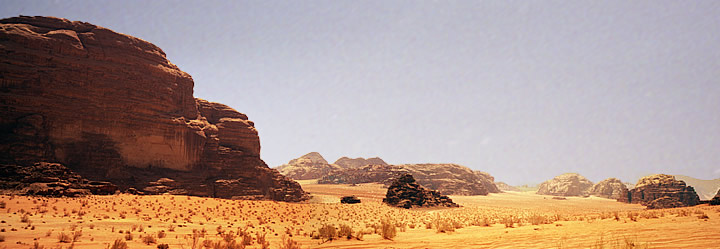
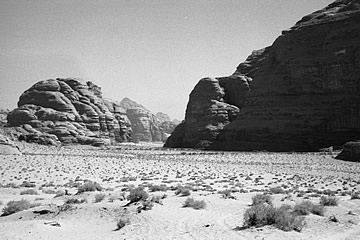
We hired a car to take us there and then a driver to take us deep into the desert.
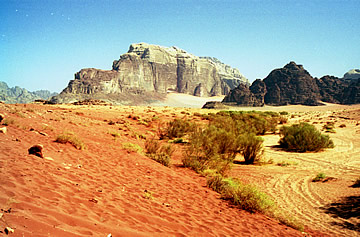
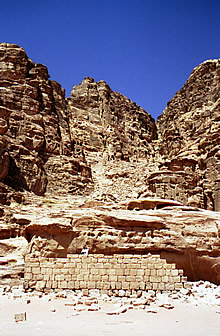
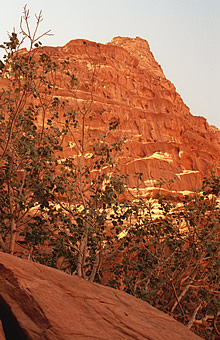
This is such an atmospheric place. We stopped several times to walk and experience the perfect silence of the desert - and once to push the jeep out of the sand!
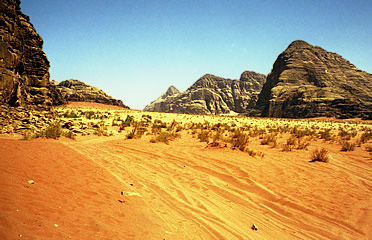
The sand is deep red in places and your guide will obligingly point out Lawrence "landmarks" - the authenticity of some, such as "Lawrence's house" is questionable.
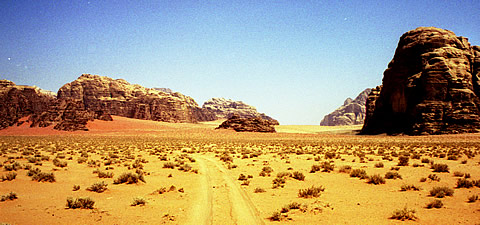
However, the springs are probably correct. Robert Graves describes the journey to Wadi Rumm in 1918:
"Towards sunset there was a break in the cliffs to the right, leading to water. They turned in here and found themselves in a vast oval amphitheatre floored with damp sand and dark shrubs. ... A little path zigzagged up to the ledge and there, three hundred feet above the level of the plain, jetted the water-springs."
Here they watered their camels.
